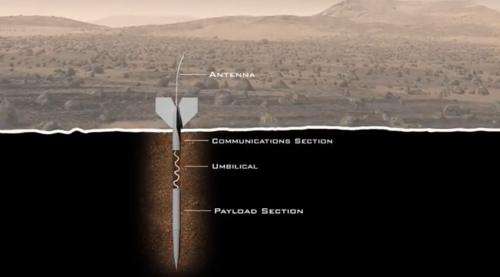'Explore Mars' group wants to build instrument seeking subsurface red planet life

Not-for-profit group Explore Mars has a new IndieGoGo campaign that could see an instrument, ExoLance, head to the Red Planet to burrow for subsurface life. The first stage will be to raise money to build the prototype and then test it, within 12-14 months of finishing the fundraising.
No launch date for this mission has been announced, but the group says that will be determined after testing is finished and a launch provider can be found.
"Explore Mars has devised a simple system capable of being delivered to the Martian surface to detect microorganisms living on or under the surface," the campaign page states.
"ExoLance leverages a delivery system that was originally designed for military purposes. As each small, lightweight penetrator probe ("arrow") impacts the surface, it leaves behind a radio transmitter at the surface to communicate with an orbiter, and then kinetically burrows to emplace a life-detection experiment one to two meters below the surface. ExoLance combines the experiments of the 1970s Viking landers and the Curiosity rover with bunker-busting weapons technology."
The project aims to raise $250,000, but there will be milestone goals available all the way up to $1 million.
Source: Universe Today




















